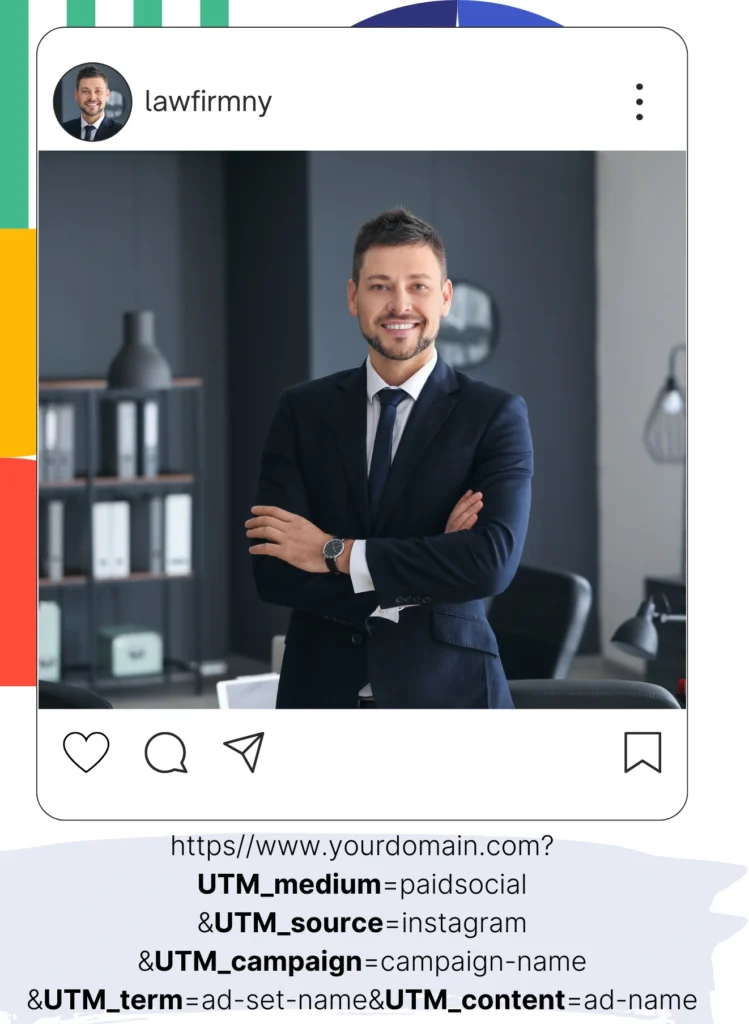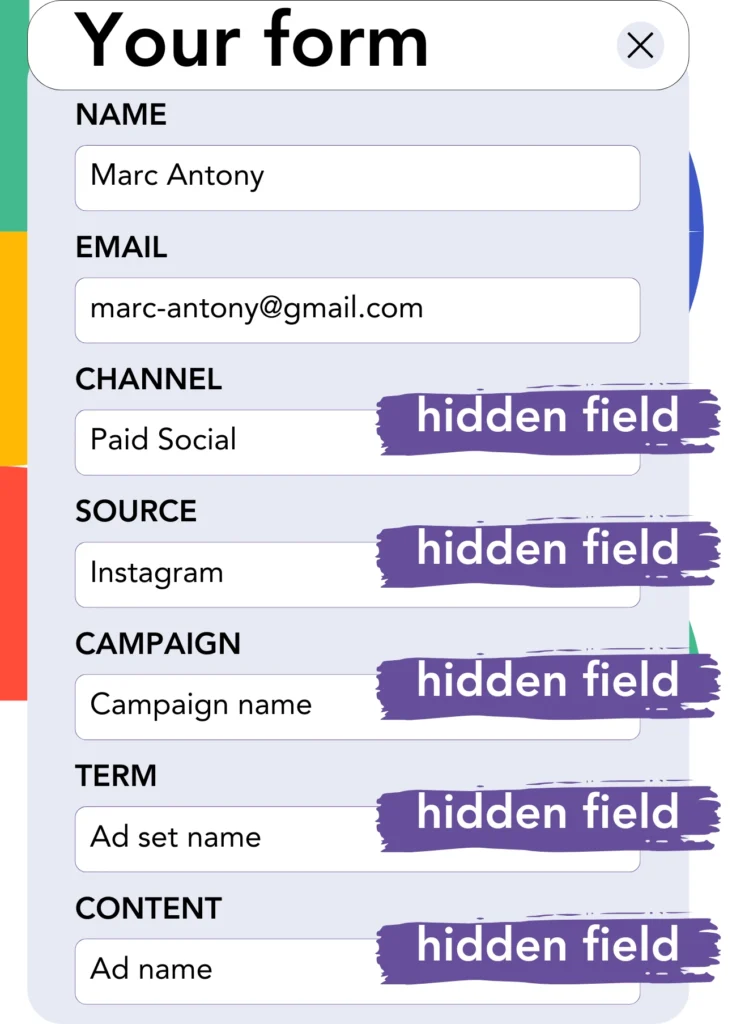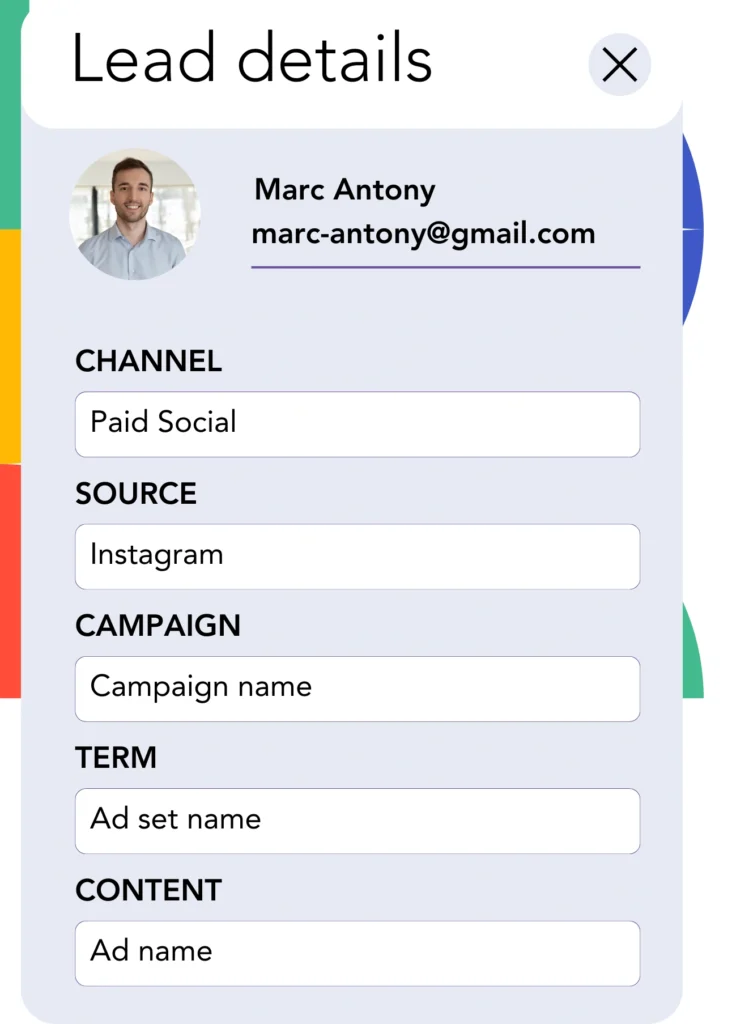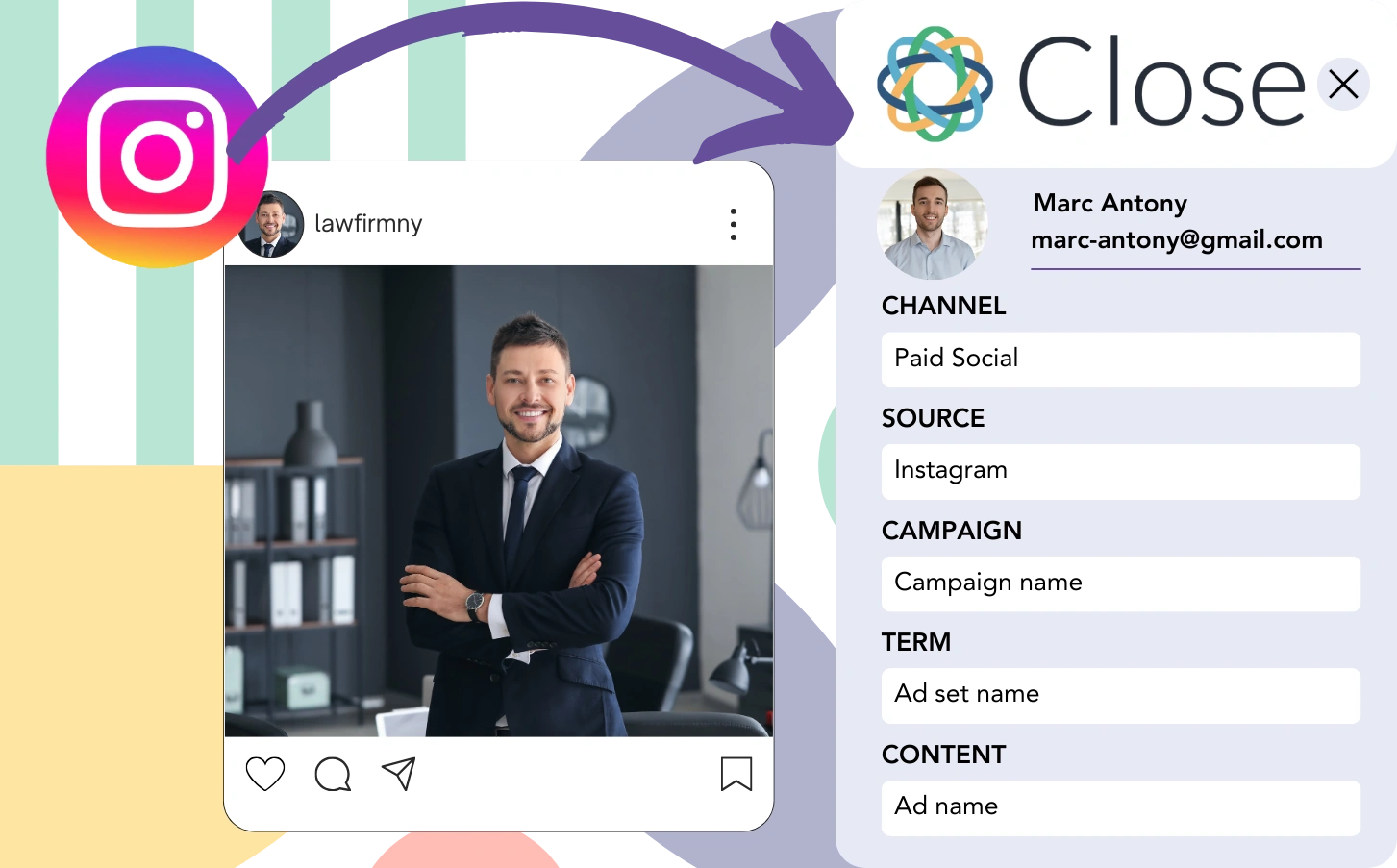Leads are generated from Instagram and entered into Close CRM, but it is not possible to determine which ad generated each lead. Once a lead becomes a customer, the connection to the original Instagram ad is lost.
Without tracking, it’s difficult to understand how well your Instagram ads perform, making it hard to know which ads bring in leads and customers. Consequently, you might allocate funds to ads without being aware of their actual effectiveness.
Fortunately, you can now link each lead directly to the specific Instagram campaign, ad set, and ad responsible for its generation.
Let’s handle each step one at a time!
How to Track Instagram Ads in Close CRM
Step 1: Add Leadsources in the head tag of your website

Step 2: Add the UTM parameters to your Instagram ads

Track Instagram ad data by adding UTM parameters to your ad URL for campaign, ad set, and ad insights. Use this example:
UTM_medium=paidsocialUTM_source=instagramUTM_campaign=campaign-nameUTM_term=ad-set-nameUTM_content=ad-name
The final URL should be presented as follows:
https://www.yourdomain.com/?UTM_medium=paidsocial&UTM_source=instagram&UTM_campaign=campaign-name&UTM_term=ad-set-name&UTM_content=ad-nameIt’s important to note that Leadsources gathers all lead source data, even without UTM parameters, ensuring that every lead is fully tracked.
Step 3: Add the hidden fields in your form

In a form, hidden fields are not visible to the user but can still retain information that accompanies the form submission.
Hidden fields in your form are utilized by Leadsources to store lead source details. So when a lead submits the form, Leadsources automatically fills these fields with Instagram ad data.
Leadsources integrates with all well-known form builders. For detailed steps on adding hidden fields in your form, please consult this guide.
Step 4: Capture the Instagram ads data in Close CRM

When users select your advertisements and visit your site, Leadsources collects the Instagram campaign, ad set, ad data, and other relevant information.
Your form’s hidden fields receive data from Instagram ads via Leadsources.
When the form is submitted, you can access the Instagram ad data and lead information in Close CRM (This requires your form to be connected to Close CRM).
How does Leadsources work?
Whenever someone arrives on your site, Leadsources collects Instagram ad data and populates it in the hidden fields of your form. Once submitted, this information is forwarded to Close CRM, including the lead details you recorded (such as name and email).
Leadsources registers all relevant lead source details for every lead acquired:
| Lead source data | Fetched automatically |
| Channel | ✅ |
| Source | ✅ |
| Campaign | ✅ OR use UTM_campaign |
| Content | UTM_content parameter is required |
| Term | UTM_term parameter is required |
| Landing page | ✅ |
| Landing page subfolder | ✅ |
The table above demonstrates that in cases where UTM parameters are ineffective—like organic sources such as Google search or Instagram bio links—Leadsources successfully retrieves certain lead source data:
- Channel
- Source
- Campaign
- Landing page
- Landing page subfolder
Unlike alternative tools, Leadsources is equipped to track lead sources through all marketing channels, covering both organic and paid.
Performance reports: Lead, sales, and revenue by source
By evaluating Instagram ads data in Close CRM, you can produce performance reports that feature:
- Leads, sales, and revenue by channel
- Leads, sales, and revenue by source
- Leads, sales, and revenue by campaign (aka. Instagram campaign)
- Leads, sales, and revenue by term (aka. Instagram ad set)
- Leads, sales, and revenue by content (aka. Instagram ad)
This allows you to tailor your Instagram budget in response to the campaigns, ad sets, and ads that are most effective in generating leads, sales, and revenue.
Let’s clarify some of the reports you can assemble:
1. Lead source reports
Produce together performance reports that summarize the number of leads acquired from:
- Channel
- Source
- Campaign (aka. Instagram campaign)
- Term (aka. Instagram ad set)
- Content (aka. Instagram ad)
- Landing page
- Landing page subfolder
Example #1: Leads by channel
This report indicates which channel is most efficient at generating leads.

Example #2: Leads by Instagram campaign
Now you can concentrate on a specific lead source (e.g., Instagram) and measure the effectiveness of each Instagram campaign in generating leads.

Example #3: Leads by Instagram ad
Once you determine the Instagram campaign that brings in the most leads, you can investigate which particular ad group or ad leads to those conversions.

2. Sales and revenue source reports
Having identified the Instagram campaign, ad set, and ad that produce our leads, we should now analyze whether these leads are converting into sales and revenue.
To do this successfully, integrate your leads with a CRM such as Close CRM. This integration helps you monitor sales and revenue generated from multiple channels, sources, Instagram campaigns, ad sets, ads, landing pages, and the subfolders within those landing pages.
By examining this data, you can adjust your Instagram ad approach to prioritize the channels, sources, campaigns, ad sets, and ads that result in the highest sales and revenue.
You can produce a variety of sales and revenue reports, such as:
- Sales and revenue by channel
- Sales and revenue by source
- Sales and revenue by campaign
- Sales and revenue by term (e.g., Instagram ad set)
- Sales and revenue by content (e.g., Instagram ad)
- Sales and revenue by landing page
- Sales and revenue by landing page subfolder
Example Scenario:
| Channel | Search Paid | Social Paid |
|---|---|---|
| Leads | 50 | 75 |
| Sales | 5 | 6 |
| Average Order Value | $150 | $100 |
| Revenue | $750 | $600 |
After initiating ad campaigns on Google and Instagram, the initial “Leads by Channel” report revealed that Social Paid ads (Instagram) generated a larger number of leads than Search Paid ads.
After evaluating the sales and revenue information in Close CRM, you found that the Search Paid channel delivered higher revenue with fewer leads than the Social Paid channel. Based on this observation, you adjusted your budget to allocate additional resources to the Search Paid channel.
LeadSources tracks the source of each lead in Close CRM, whether they come from ads, organic search, social, email, etc. and syncs that data with each submission. See the full breakdown on the lead source in Close CRM page.

